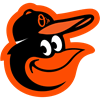Dominate your fantasy football league this season by exploring our comprehensive draft kit. Packed with expert insights, rankings and strategy tips, the kit features our interactive mock draft simulator to prepare you for every scenario. Streamline your draft-day decisions using our printable cheat sheet and stay ahead of the competition with our up-to-date rankings for all formats. RotoWire has everything you need to win. To learn more, subscribe now and start optimizing your roster today!
If you have ever been in a dynasty startup draft you have likely noticed the frenzy to roster young, unproven players. This was evident in the dynasty mock draft in this year's RotoWire football magazine. Dynasty fantasy managers shove each other out of the way to use high draft picks on players who are more a projection than a bankable asset. Even experienced dynasty players generally have a major leak in their game.
They are ageist!
The more dynasty leagues you join, the more you observe the obsession with young players. Many dynasty players, even experienced ones, make the error of loading their rosters with hot breakout candidates who have not produced consistently in the NFL. In theory, yes, you want to roster young players who will have a longer shelf life of fantasy relevance. But we reject aging players to an unhealthy extreme. As soon as a player is 28, we want to trade them off our roster (expecting to recoup full value as if that player is still 24).
There is a clinical term for this affliction; "Sexy Roster Syndrome," or SRS. Dynasty players get a feeling of euphoria from looking at their roster filled with players touted as the next big thing. The sobering moment for those afflicted with SRS is when the redraft rankings come out and the hot prospect is seen for what he is — an unproven player with legitimate questions. For example, Falcons rookie WR Drake London is a fringe first-round pick in our magazine dynasty mock draft. In redraft leagues, London typically goes around the seventh or eighth round. He could certainly be one of the premier receivers in the NFL for the next half decade, but building your dynasty team on a projection is suboptimal.
There are multiple paths to building a winning dynasty fantasy football team — anyone who tells you they have it 100 percent figured out should be ignored — because dynasty fantasy football is an ever-evolving game that differs significantly from traditional redraft leagues. The main difference is the valuing of players. A player's value in redraft leagues can be very different from how the dynasty market values that same player in the same year.
There is no better example in 2022 than Buccaneers wide receiver Mike Evans, who will be 29 when the season starts. Evans has a large chasm between his dynasty average draft position of WR29 and his redraft average draft position of WR9. Evans' age is driving his market value too low in dynasty startup drafts. Evans is a prime example of dynasty players not valuing winning in the short term. Evans is a near lock for 1,000-plus yards and 8-10 TDs. The large gap in ADPs is how sharp dynasty players profit. The best fantasy forecasters do an average job at predicting what will happen in the season in front of us. How can we expect to predict what will happen three seasons from now? A player like Evans who has produced at an elite level for nearly a decade is as safe a bet as we can make.
There is a time to be wary of hall of fame fantasy players like Julio Jones, A.J. Green and T.Y. Hilton. Dynasty players just need to let the redraft market do all of the work. Those three players have redraft ADPs outside the top-60 wide receivers. The aging player who has displayed a clear drop in production or players who have accumulated multiple injuries are safe to fade. Players who are still among the league leaders in the previous year's final ranks and are projected to produce well in the upcoming season represent a clear buy.
While many dynasty players are in hot pursuit of unproven youth and suffer from "Sexy Roster Syndrome," we can exploit our edge with aging veterans.
"Win Now" Strategy
The name says it all. "Win Now" dynasty managers target players who are squarely in their peak-to-late prime and are producing at a high level. This is a strategy that most resembles traditional redraft leagues. Usually, these players fall down draft boards. Players like Derrick Henry, Dalvin Cook and Nick Chubb, all of whom will be drafted in the top 25 of redraft leagues this year, will be drafted outside the first three rounds in many dynasty startups. Those three are the best examples of highly productive fantasy assets that youth seekers are afraid to roster.
Youth-seeking dynasty managers claim they do not want expiring assets on their roster in the early rounds. They prefer to draft unproven "high upside" runners like Travis Etienne, J.K. Dobbins and Breece Hall. Often dynasty managers are happy to overpay for the young, unproven players. Win-now dynasty players still draft youth and rookies, but only when they fall to fair market value. It is easy to get caught up in rookie hysteria during a startup draft, but you must stay disciplined once you commit to winning in the short term.
The win-now strategy does not mean drafting all late-prime players. The key is drafting late-prime players at extreme values while building a base of young players who are distressed assets. Young players coming off injuries, players with off-field concerns or players who failed to meet expectations in the previous season will be priced down in dynasty startup drafts.
You should certainly target some youth when it comes at a reasonable draft cost. Wide receivers Rashod Bateman (22), Jerry Jeudy (23) and JuJu Smith-Schuster (25) are examples of young players not being overvalued in 2022 dynasty startup drafts. Those players come with some flaws and doubts about their future. Flawed players are still at the peak of their powers, but have underdelivered to expectations in their short careers. The flawed players who have underachieved because of team context, and not lack of skill, are the answers to the test. Figuring out which players those are is a tougher task.
Aging Veterans & Roster Liquidity
One of the ways to gain an edge in dynasty leagues is to keep your roster "liquid." The ability to move in and out of assets is an underrated tactic. Certain players produce well enough to make your weekly starting lineup, but they do not have trade value or liquidity in the dynasty trading market commensurate with their actual value. Players like Ezekiel Elliott and Josh Jacobs are good examples. Although they are plug-and-play starters, there is doubt about their long-term value, so the market price is suppressed.
Dynasty players need to play in multiple leagues to fully grasp which players have a gap in actual value vs. market value. For example, entering 2022, Davante Adams is likely to have elite actual value. The dynasty market, however, might label him an "aging player" not worth equal value in trades. Of course, metaphorically speaking, why do you care about the price of your house on the open market if you are going to live in it? Meaning, that if you are going to start Adams every week and ride out his fantasy lifespan, it doesn't matter what the market will trade for Adams; you will just benefit from his production while continuing to acquire rookies who eventually replace him in your lineup. On the flip side, there is an obvious opportunity cost in taking on this sort of asset. This is a fine line that must be navigated when managing the overall portfolio of a dynasty roster.
Guest on the RotoWire Dynasty Football podcast, Kevin O'Brien, aka the Fantasy Football Engineer, advised treating your dynasty roster similar to a 401K investment portfolio with respect to aging veteran players: 50 percent in large cap funds (peak-production veterans), 25 percent in growth funds (unproven youth with upside) and 25 percent in small cap funds (speculative players). This popular balance used to secure our finances should give you the ability to compete in the current league year and inject youth to sustain your roster for the future.
Veterans' Contract Status
If we are to predict how late-peak veterans will be valued beyond the upcoming season, we need to understand their contract situations. Furthermore, we also need to know the contract status of their quarterbacks. Fantasy points go as the offense goes, and the offense goes as the QB goes. Many times we see splashy headlines that a player signed a four-year deal worth some massive amount of money. It is important to research the guarantees of that contract, which often are no more than two seasons. NFL teams have options to get out of the contract after a couple seasons with no penalty.
When we understand how long a player is insulated by his contract status, and how long associated pieces on the offense are as well, it is a helpful data point for our valuing of vets like Mike Evans, Stefon Diggs and Tyreek Hill.
Evans has two years left on his contract, but as soon as next year he could be without Tom Brady. Diggs signed a multi-year extension this offseason, after 26-year-old QB Josh Allen got one last summer. Although Evans is just three months older, Diggs has a better multi-year outlook. While separated by only a handful of spots in the WR ranks for redraft ADP, the two wideouts are separated by 10-12 spots in dynasty. Indeed, in our dynasty mock draft, Diggs was drafted in the second round — Evans went three rounds later. Tyreek Hill falls between these two. He is the same age and has a long-term contract, but the QB status is uncertain after 2022.
Veteran-Value Variance: NFL Calendar
Dynasty-player value for veterans can change significantly depending on the time of year in the NFL calendar. For example, running backs who hold top-12 overall value in March can take a massive hit in May after the real NFL Draft, if their team uses a relatively early draft pick on a runner.
Older big-time producers like Dalvin Cook often are faded in April dynasty startup drafts. (In our RotoWire magazine mock, Cook was not selected until the fourth round in a 14-team league!) But often the managers who pass on a player like Cook in spring end up willing to trade at least close to market value early in the season after the player has a big game or two.
Aging Veterans are Undervalued
Dynasty fantasy football is best thought of in a 2-3-year window rather than a 4-5-year time frame. Considering the NFL's volatility week to week and season to season, it is a bad bet to project more than a handful of seasons. Of course, there are exceptions, like elite, young QBs, whose long-term outlook is strong. These are the precious few.
Next time you are in a dynasty startup draft and you see the room fighting to draft the shiny new toys (rookies), consider letting them have their fun while you collect proven veteran winners. You will have the last laugh and the first-place prize in January.
This article appears in the 2022 RotoWire Fantasy Football magazine. Order the magazine now.

























